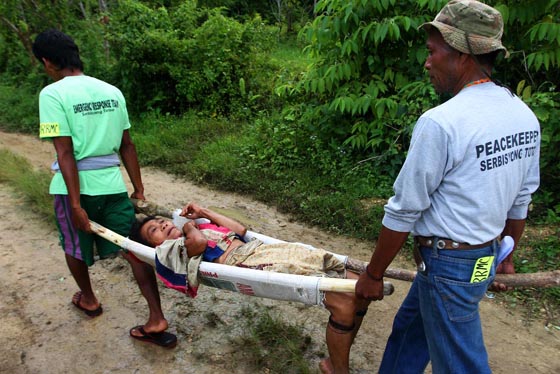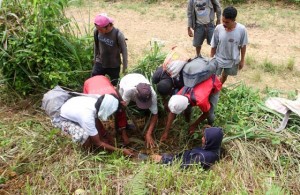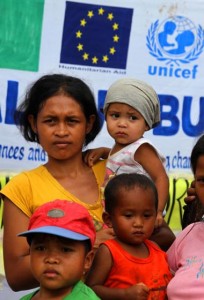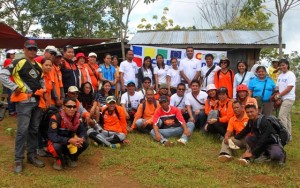
Home to 216 families mostly belonging to the ethnic Manobo, the village of Kinawayan situated 800 meters above sea-level, is highly susceptible to landslides, according to the assessment made by the Department of Environment and Natural Resources-Mines and Geosciences Bureau.
The geo-hazard mapping of the village shows specific features that may affect ground stability of 7 areas in the village.
Early this year, Jimmy Montero, the Municipal Environment and Natural Resources Officer, sought the relocation of families, especially those living in steep slopes, away from critical areas where landslides can occur without warning. Despite living in safer grounds, families are wary as rains pound risk zones.
To limit the impact of disasters, the Arakan Municipal Disaster Risk Reduction Council and the Kinawayan Disaster Risk Reduction Council held recently a day-long community-wide contingency plan and disaster preparedness drill designed to simulate a major storm in the north-eastern part of Arakan.
The activity was initiated by ACF International through the project “Scale Up, Build Up: Strengthening local alliances and advocacy and empowering champions on disaster risk reduction (SUBU),” in partnership between the Disaster Preparedness Program of the European Community Humanitarian Office (DIPECHO) and is implemented by a Consortium composed of ACF International, Care Nederland, Plan International, Christian Aid, Oxfam and Handicap International.
The activity was conducted with oversight from the Provincial Government of North Cotabato, the Department of Interior and Local Government and the Center for Disaster Preparedness.
“This exercise is designed to test the Municipal Disaster Risk Reduction and Management Plan, and to look at actions that may need improvement, so that when disaster strikes, we will have a clear understanding of how things should run. This activity showed the urgency of families working together to reduce the effects of landslides, flash floods, and avert loss of life,” Felix Patrimonio, the MDRRMC chairman and Municipal Administrator, said in a statement sent by ACF International to the Mindanao Examiner.
The exercise was segmented into three scenarios to run-through a specific procedures dealing with preparedness mechanisms, response to and recovery from the heavy rains.
Head of Base and Program Coordinator Faramarz Hashtarkhani explained that ACF International assisted the local government in capacitating the vulnerable communities and family members in disaster management.
“This activity engages families to take action to reduce their risks to disasters and raise awareness on DRR, promoting a local culture of disaster reduction, including disaster prevention, mitigation and preparedness, and to increase their knowledge on the importance of food security, good nutrition and proper care practices, and adequate hygiene and sanitation such as proper hand washing to prevent and mitigate occurrences of diseases during disasters,” he said in the same statement.
Kinawayan village leader Dahines Lagcuman said he no longer fear for his family and his constituents even if rains continue to hammer Mindanao because they are now more prepared to handle disaster situations.
“We are now heading to the height of rainy season, but my family and the entire community already know what to do in the event when disaster hit us. The responsibility to save lives and reduce the effect of disasters now rest among us. The impacts of Typhoon Pablo (Bopha) and Sendong (Washi) should serve as a warning for us to prepare and be ready,” Lagcuman said. (With a report from Mark Navales)









